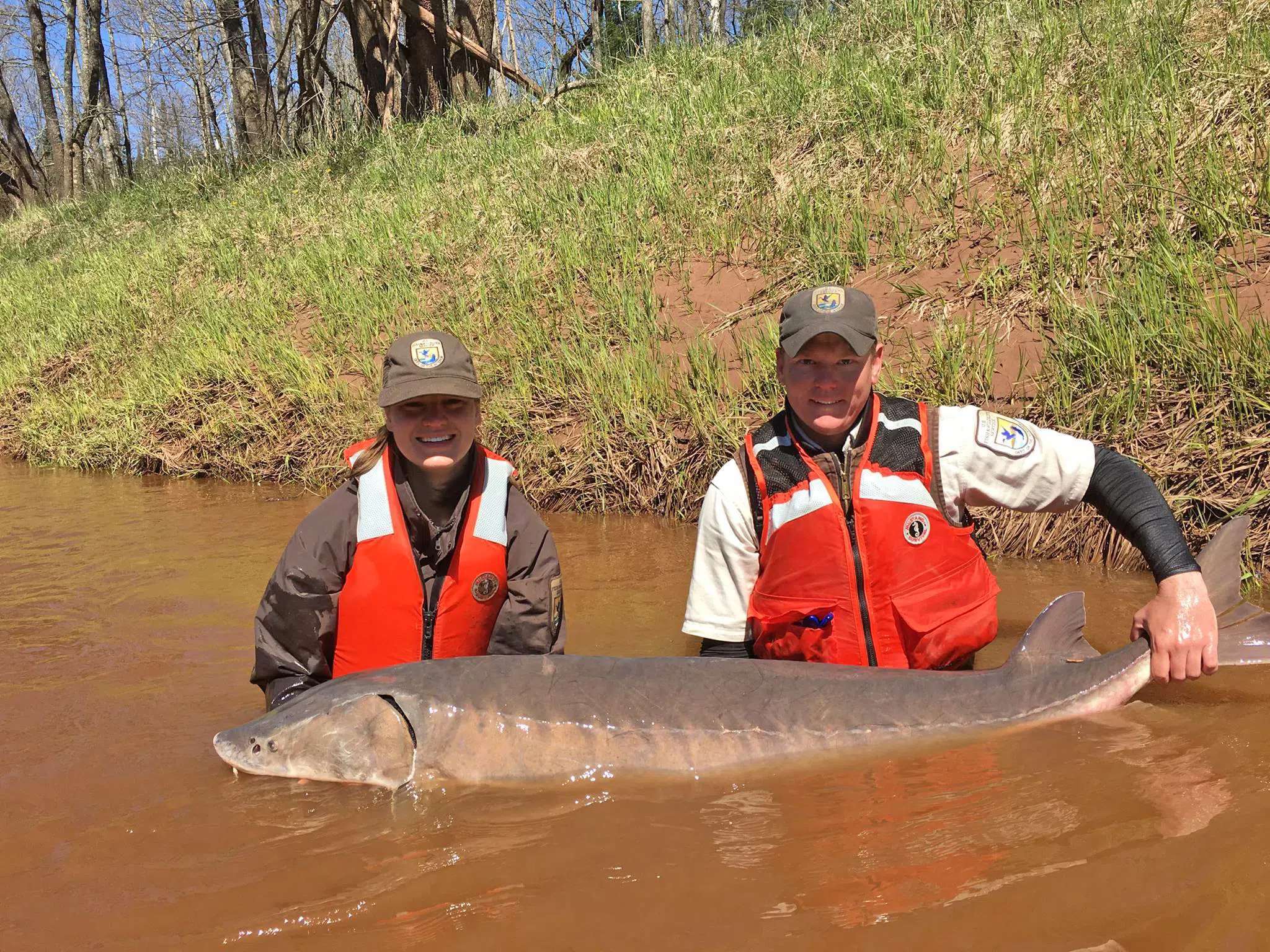The U.S. Fish and Wildlife Service says Lake Sturgeon does not need to be listed in the Endangered Species Act.
It cites ongoing conservation efforts to protect existing populations or return them to areas where they had disappeared.
“The fact that we’re seeing more and more lake sturgeon populations spawning in their historical habitat is a clear sign that restoration efforts are progressing,” says Will Meeks, Midwest Regional Director, in a statement.
“This success is credited to many partners, including states, Tribes, local organizations and others across the country coming together to conserve this species.”
The most widespread ongoing conservation action has been the stocking of captive-reared sturgeon.
Some also were relocated from the Rainy River.
The Fish and Wildlife Service says populations are not at historical levels, but the restocking has bolstered existing populations and returned lake sturgeon to areas where they had disappeared, such as the Red River of the North, the Tennessee and Cumberland Rivers, the Middle Mississippi River, and the Coosa River.
Ontario declared sturgeon a threatened species in parts of northwestern Ontario in 2008.
There are catch-and-release seasons in place for anglers in Ontario and Minnesota.
Sturgeon have a prehistoric appearance because of their large size, shark-like tails, and bony plate-armoured covering.
Its origins can be traced back at least 150 million years.






